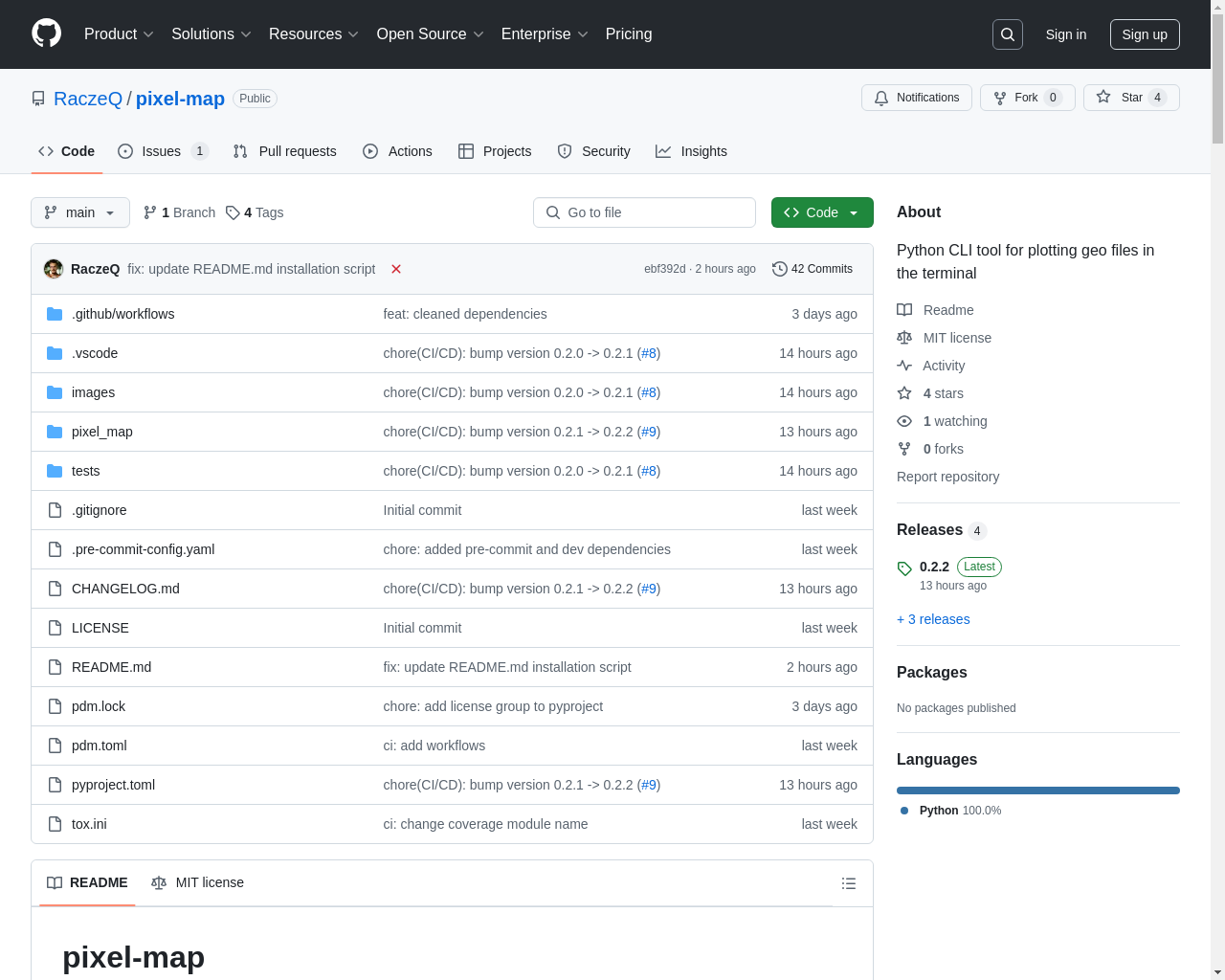

Highlight 1
Pixel Map allows users to quickly inspect geoparquet files in a fast and direct manner, saving time compared to loading files into more complex applications.
Highlight 2
The tool's straightforward design means that even users with minimal technical expertise can navigate and use it effectively.
Highlight 3
Being terminal-based, it integrates well into existing workflows, allowing users to analyze geographical data in environments where graphical interfaces may not be available.

Improvement 1
The application could benefit from more comprehensive documentation or a user guide to help new users get started without confusion.
Improvement 2
Adding more advanced features, such as customizable visualizations or the ability to handle other file formats, could enhance its functionality.
Improvement 3
Although it is terminal-based, the visual output could be improved for better clarity or to convey more complex datasets effectively.
Product Functionality
Consider expanding file format support to include other geographical formats like GeoJSON or Shapefiles for broader usability.
UI & UX
Implement interactive tutorials or tooltips within the terminal interface to guide users, enhancing their overall experience.
SEO or Marketing
Develop a content marketing strategy that includes blog posts or tutorials highlighting the benefits and use cases of Pixel Map for potential users.
MultiLanguage Support
Implement multi-language support to cater to a global audience, starting with commonly spoken languages in the data science and GIS communities.
- 1
What file formats does Pixel Map support?
Pixel Map primarily supports geoparquet files for visualizing geographical data.
- 2
Is Pixel Map easy to install?
Yes, installation is straightforward, typically involving a simple pip install command for Python users.
- 3
Can Pixel Map work on any operating system?
Pixel Map is cross-platform and can be used on any operating system that supports Python and terminal commands.
